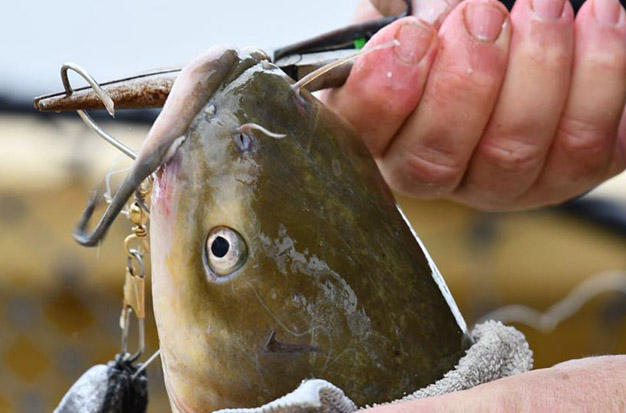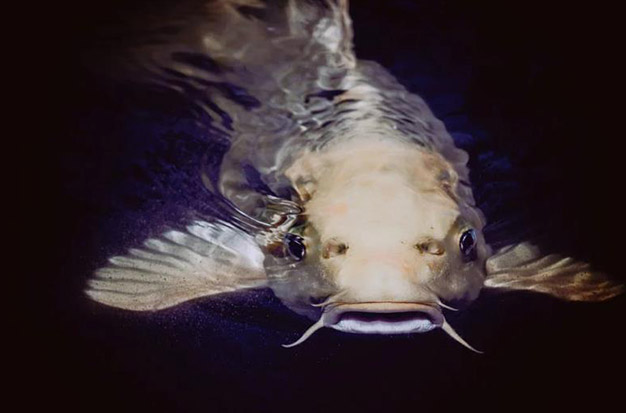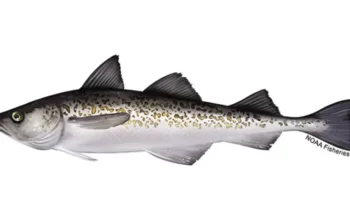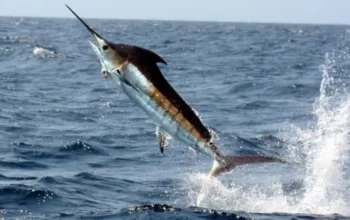The flathead catfish is the biggest native catfish in Minnesota. A flathead catfish in the 70- to the 80-pound range was voluntarily released by an angler in the St. Louis River in 2017 after being caught by commercial anglers up to that point. Saint Croix River close to Stillwater Now is a good time to give flathead catfish fishing a try if you’ve never done it before.
It’s much simpler than you might think to catch flathead catfish. You can catch a lot of flathead catfish with the right spot selection, bait, rig, and techniques. I frequently outfish people in boats on the bank! Although catching flathead catfish from shore can be challenging, you can do it!
Table of Contents
What Is Flathead Catfish?
Even among freshwater catfish native to North America, the Flathead Catfish, also called the Yellow Cat, Mud Cat, Johnnie Cat, Pied Cat, or Mississippi Cat, is renowned for its enormous size. It is regarded as having an “ugly” face, just like all catfish. The Flathead Catfish may seem serpentine to some people, their whiskers may be unsettling, and even having to clean off the slime may be off-putting to many. It does resemble other catfish, but its flat head is what sets it apart. Because of their olive-colored bodies, they are also known by their scientific name, Olivares. Usually, they have light brown or pale yellow spots on their bodies.
Their tail is only slightly indented and does not have a deep fork like the Blue and Channel Catfish’s tail.
What Does A Flathead Catfish Look Like?
We’ll go over how to distinguish flathead catfish from other fish species because of their distinct appearance. It has a forked tail and a relatively long body in addition to a flat head. They develop a potbelly as they approach a medium to large size. A broadhead and beady eyes are on it. The flatness of the head is brought out by the eyes.
The oval shape characterizes its head. The lower jaw protrudes more than the upper jaw, emphasizing the head even more. This catfish’s anal fin is shorter along the base than those of other catfish species. 14–17 fin rays are present.
The fish has no distinguishable color. Due to environmental variations, it is typically mottled with varying brown sides and yellowish on the sides. On its belly, it becomes whitish or lighter in color.
The dorsal and pectoral spines of flathead catfish are heavy and sharp, just like those of other catfish. They are also referred to as mud or yellow catfish, and nicknames for them are not uncommon.
What Food Does A Flathead Catfish Eat?
Predators include flathead catfish. Since fish typically feed at night, it ambushes its prey by waiting for it covertly. Adult flatheads are opportunistic feeders that only consume other fish, such as carp, bullheads, and gizzard shad. On the other hand, young ones consume insect larvae until they are about three inches long, at which point their diets expand to include other small fish. Young flatheads typically eat insects, clams, crayfish, shiners, sunfish, and various other small fish.
Because flatheads are reluctant to eat odoriferous or outdated bait, live fish can be a good bait for flatheads while you are fishing.
Even though flatheads aren’t exclusively nocturnal, they are typically more active at night and in the month of June. They will therefore feed at various depths and are typically shallower. Therefore, it might be dormant during the day in deep water or concealed.
What Is The Best Time To Catch Flathead?
The spring through fall seasons is ideal for pursuing flathead catfish. I usually have the best luck from May to August because flatheads LOVE warm water. They seem to get more active and begin biting when the water temperature reaches 55. Investigate the local body of water to learn more about this. Most I’ve discovered have a current water temperature.
In the spring and throughout the summer, flatheads are usually found in shallower waters. They typically recline under trees, logs, and other forms of shaded cover on hotter days. These are crucial locations to set up bait.
Don’t be surprised if the fish are a little deeper on the hottest days because sometimes I have to move around a lot to find where the fish are. The site will increase as summer transitions into fall. Normally, fish move up and down the river. One of the best times to catch some good fish is right now. Even though flatheads are typically in deeper water at this time of year, the fish are still consuming a lot of food.
The deepest holes in the river are typically already occupied by flatheads by the start of winter. Although they are very inactive during this time, they are still catchable.

Where To Fish Flathead Catfish?
The Mississippi River below the Coon Rapids dam, the St. Croix River, and other nearby bodies of water are home to Minnesota’s flathead catfish. Croix River, which is below Taylors Falls and the Minnesota River.
The starting point for the St. The town of Stillwater is close to the Croix River. In this region, 15-pound flatheads are fairly typical. In a similar vein, Pool 2 of the Mississippi River, which is the section between St. Paul and Hastings is a wise choice.
Only below the Minnesota River Granite Falls dam in the southwest do flatheads still exist. Since the trophy flatheads have just finished spawning, July and August are arguably the best months to target them. Upstream of Montevideo is a great location to catch eating-sized channel catfish that weigh between one and two pounds.
In particular, root wads provide excellent fishing opportunities where submerged timber is present. Catfish prefer to hang out in spots with lots of baitfish and relatively deep water compared to the rest of the area. Even better if the current in this area is only mild or minimal.
The flathead fish’s primary food source is other fish, which it consumes using its strong sense of smell and lateral line’s capacity to sense vibrations. It might forage in shallow riffles more actively at night.
The Flathead Catfish: How To Catch Them?
You can use a hand line or a fishing pole if you’re thinking about flathead fishing. The third method is known by many as “catfish noodling.” It’s a different way to fish, but once you get the hang of it, it works well. Any of these possibilities could result in the kind of delectable fish that every angler dreams of catching.
If a traditional approach is chosen, the best rod and reel for catching flatheads are at least a 7′ medium/heavy action rod (minimum size), and the best reel is a bait-casting reel. 4/0 to 8/0 hooks are best, not smaller or larger, only based on your bait and fish size in the water, no float. The equipment is a little much for freshwater fishing, we are aware that it may seem like overkill. However, because flathead cats have enormous mouths and are considered giants, you should use large equipment, line, baits, and tackle.
Since they are more prevalent and simpler to catch, you should concentrate on the smaller fish under 10 pounds if you intend to keep one of these fish. The daily possession cap is set at ten.
Think Like A Predator
Getting a handle on the bushwhackers is the first thing to do when flathead fishing. To carefully ambush their passing prey, they may conceal themselves behind driftwood piles, submerged logs, snags, downed trees, and riverbank cavities. They are not like their cousins and cannot engage in lengthy pursuits. They mostly move around at night and in small groups.
Your chances of catching flatheads will increase if you are aware of these. Make sure to fish during the day and concentrate on shady near-shore areas and dense cover. It’s difficult to remove them from their positions. It is possible, though, if you fish with heavy, durable tackle.
Be cautious and float in the bait below the surface.
Learn About The Loner
Fish that are aggressive are the large flatheads. When it comes to their own kind, they frequently act aggressively. A primary flathead habitat thus rarely supports more than one heavyweight adult. As a result, after you catch one, it may be pointless to continue fishing in the same area. Therefore, take one in one place, then move to another. It’s a common practice to see more flatheads when fishing.
Do Not Drop Deads
Many fishermen believe that large flatheads will consume almost anything. When it comes to their bait or food, flathead catfish are typically scavengers and are not particular. When fishing, this is only true for small flatheads. Young ones, which only weigh a few pounds, are drawn to baits like live fish on a line, worms, crawfish, and stink baits.
It’s important to keep in mind that these baits won’t work for all fish species if you’re looking for heavyweight flathead fish. Water temperature may have an impact on how the flatheads eat; they don’t normally eat invertebrates for dinner. A second live fish is used as the bait for a giant flathead. It would therefore be best if you used that to entice them. The best options include suckers, chubs, goldfish, carp, sunfish, and bullheads. Know that fishing in a lake, a channel, or a river may require a different approach.
Conclusion
Being a successful angler in part depends on having the right bait at the right time and place. Give up trying to find the next magic cure. Keep using one of the straightforward, tested baits I’ve listed for your target species. Throw away the bait buffet and get the right bait in the right location combined with the right rods, reels, and catfishing gear while you focus on presentation and you’ll start catching more fish!




